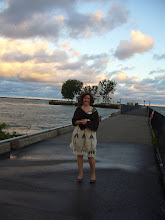There’s a new report out on rebuilding Cleveland’s neighborhoods by Policy Bridge. It uses an unfortunate and over-extended medical treatment metaphor to call for triaging neighborhoods and “cutting out diseased tissue.” The main theme of the report is that “Cleveland must make strategic choices about rebuilding its neighborhoods, making tough decisions about investing aggressively in some while scaling back investments in others. We have to, in essence, pick our winners and losers.” Okay, if we must compare struggling communities to organs ravaged by cancer cells and viruses, a comparison which wildly glosses over the complexity of neighborhood dynamics, how about this health care metaphor: preventive care.
Preventive care refers to measures taken to prevent diseases rather than curing them. In my metaphor, the poor diet, smoking, and poor exercise habits of the patient are suburban sprawl, regional balkanization, dependence on fossil fuels, economic activity that results in pollution rather than resource recycling, concentration of wealth, and corporate irresponsibility. In short, preventive care for a city is regional sustainable development in balance with nature, and this is where our resources should be directed. Preventive care for a human being treats the whole person, rather than specific organs. Preventive care for a city means recognizing that all neighborhoods are part of the urban ecosystem that is the city of Cleveland, rather than focusing on which neighborhoods to save and which to demolish.
The Policy Bridge report, “Rebuilding Blocks: Efforts to Revive Cleveland Must Start by Treating What Ails Neighborhoods,” cites the Re-imagining a More Sustainable Cleveland initiative as a promising recovery plan. But the Re-imagining Cleveland initiative in no way advocates triaging entire neighborhoods. Instead, it examines the city in detail, looking at watersheds, soil conditions, and concentrations of vacant properties, to start to envision a sustainable shrinking city block by block, lot by lot. And it asks questions about what kind of investment should be directed to different areas, rather than claiming that some areas deserve investment and others do not.
Surprisingly, the report does not mention Neighborhood Progress Inc’s Strategic Investment Initiative, which concentrates neighborhood development funds in targeted neighborhoods with anchor projects, rather than distributing resources evenly to all neighborhoods. A few of the Strategic Investment Initiative’s neighborhoods are highlighted in the report as examples of appropriate investment. But take the Detroit Shoreway example. Yes, the neighborhood is near the lake and benefits from the new housing development inspired by promises of a boulevarded Shoreway. However the anchor for the launching of Detroit Shoreway’s Gordon Square Arts District is not the lake. Nor is it not an internationally known hospital or museum complex. The Gordon Square Arts District was built around one small alternative theatre, which among other projects produced works by recovering homeless and addicted men, a second theatre structure in terrible condition that had been unused for decades, a community theatre looking for a new home with ADA accessibility, and subsidized affordable apartment development run by the community development corporation. From this collection of humble assets the neighborhood has created a thriving district with shops, restaurants, theatres, and a new streetscape in a community that if triaged by statistics on poverty, population decline, foreclosures and crime might fall into the “cutting out deadly pockets of disease” category. My point is that this kind of success story of building on small assets, thinking about good urban design, and imagining the possibilities can happen in any neighborhood. Neighborhood Progress Inc puts it this way: “This comprehensive approach, while being pioneered in a few neighborhoods, is applicable citywide.”
An underlying important message of the Policy Bridge report is that strategic investments need a greater focus on schools and safety, and connecting residents with jobs. Ultimately, though, the report keeps returning to sweeping statements like this: “Weak neighborhoods that have no connection to Cleveland’s powerful nodes of medical, educational, cultural, and industrial establishments do not represent good prospects for reinvestment. The limited resources of Re-imagining Cleveland, the Cuyahoga land bank, and other renewal efforts would be better spent in neighborhoods with better odds for long-term survival, including job creation and economic impact.” I don’t know about you, but I want all our neighborhoods to achieve long term survival. I think this should be one of our fundamental goals, and that all of our neighborhoods should not only survive but thrive.
So we need a vision of rebuilding Cleveland that embraces preventive, holistic care and addresses the root causes of problems without pitting neighborhoods against each other. We need to invest in all neighborhoods and all communities. Here’s my vision. In some neighborhoods investment will take the form of deconstructing homes, utilizing vacant lots for farming, natural habitat, and stormwater management, while maintaining transit-accessible pockets of homes and retail that function as small ecovillages. In other neighborhoods where small parcels have been assembled into large scale redevelopment opportunities, intense investment in new homes and commercial development will occur. Development will be shaped by regional policies that guide investment away from fossil-fuel dependent exurbs and into the heart of the eco-city. A thriving locally-based economy will ensure that Cleveland residents get a fair share of the profit from development. Schools, safety, and jobs will be recognized as important elements of a sustainable community. And resources will be invested in ecologically sustainable design and infrastructure to ensure a clean lake and functioning greenspaces that increase our quality of life for all our residents and attract people from around the country. This is what I mean by preventive care, and it's a very different health analogy for the city.
The Policy Bridge report can be found here: www.policy-bridge.org
Subscribe to:
Post Comments (Atom)

No comments:
Post a Comment